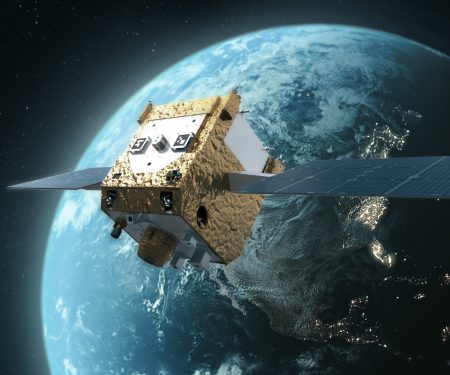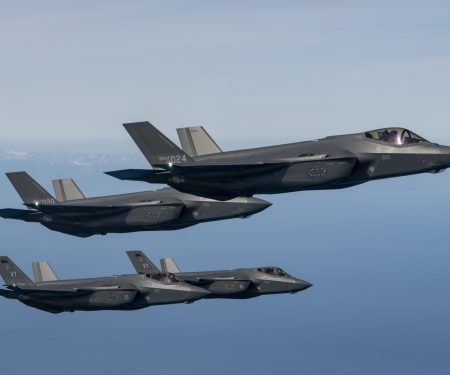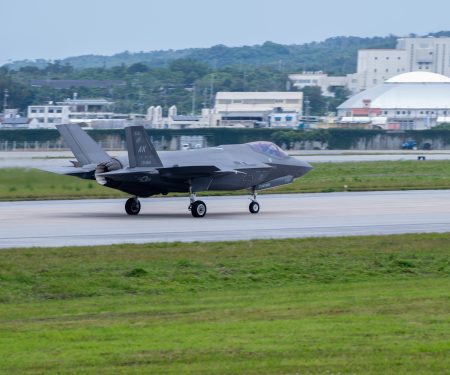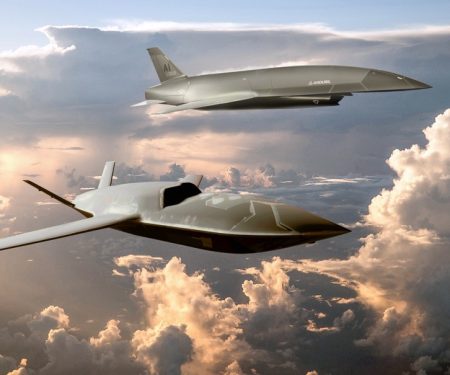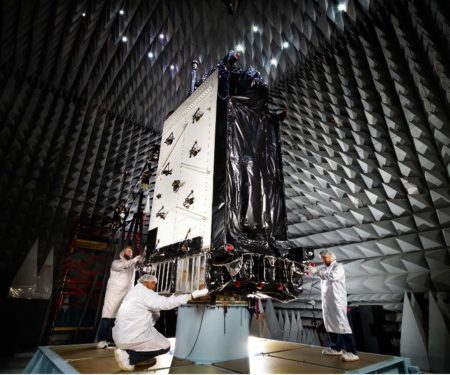F-35 Office Seeks to Clarify $2.1 Trillion Cost Ahead of Budget Release
With F-15C Gone, Kadena Gets Fresh Rotation of F-15E and F-35 Fighters
Navy Eyes ‘Interchangeable’ CCAs with Air Force, Lessons from MQ-25
How to Win a War in Space: SPACECOM’s 5 Keys
Space Force Went Fast for Its Last GPS Launch. Now It Plans to Go Even Faster
Radar Sweep
The Battlefield Lessons North Korea Has Learned Fighting Ukraine
The decisive battles in the Kursk region, from which Ukraine’s army has now largely retreated, show how North Korean forces adapted their once outdated tactics for Europe’s biggest war since World War II with lightning speed.
Hegseth: US, Panama Will ‘Take Back’ Canal from Chinese Influence
The United States and Panama will work together to take back the Panama Canal from “China’s influence,” Defense Secretary Pete Hegseth said April 8 while standing in front of the vital shipping lane.
Senate Confirms Trump’s Nominee for Top Pentagon Policy Job
The Senate on April 8 confirmed the appointment of Elbridge Colby to be the top policy adviser at the Pentagon, overcoming concerns that he has downplayed threats from Russia and its president, Vladimir Putin.
Troops Booted over COVID-19 Vaccine Are Being Offered Back Pay but Not Huge Payouts
The Pentagon, acting on orders from President Donald Trump, has begun to lay out the details of its plan to woo back thousands of service members who were involuntarily discharged over their refusal to receive the COVID-19 vaccination.
Pentagon Can Re-Fire Some Probationary Workers, Supreme Court Says
The Supreme Court on April 7 reversed the reinstatements of thousands of federal employees the Trump administration has sought to fire, dealing a blow to the workers and groups challenging one of the administration’s key efforts to upend the civil service.
F/A-XX Could Be the Navy’s Last Piloted Fighter, Bring Greater Range
The Navy’s upcoming sixth-generation fighter may be its last manned fighter, the director of the service’s air warfare division said April 8. F/A-XX will include new capabilities and technologies, such as artificial intelligence and machine learning, Rear Adm. Michael Donnelly said at the Navy League’s Sea Air Space conference. The upgrades will provide more battlespace awareness and improve how naval aviators make decisions.
Feinberg Releases New Guidance for DOD’s Civilian Workforce Shakeup
Deputy Secretary of Defense Stephen Feinberg issued guidance this week to advance the Pentagon’s plans to restructure, consolidate and reduce its sprawling civilian workforce.
SDA Opens Contest for 54 ‘Tranche 3’ Missile Tracking Satellites
The Space Development Agency on April 7 issued a solicitation to industry for at least 54 new missile tracking satellites for its next development tranche, Tranche 3. The Tranche 3 Tracking Layer birds—part of a larger planned constellation of hundreds of satellites in low Earth orbit to track not just ballistic but also hypersonic cruise missiles—would expand on the capabilities being provided by earlier design iterations under Tranche 1 and Tranche 2.
New Space Force ‘Orbital Watch’ Initiative to Share Threat Info with Commercial Operators
The Space Force unveiled a new program, called Orbital Watch, designed to share unclassified information about threats on orbit with more than 900 commercial operators registered with Space Systems Command’s (SSC) Front Door—an effort that is being powered via cooperation with the Intelligence Community, U.S. Space Command (SPACECOM), and the Pentagon’s Space Policy shop.
SpaceX Secures Majority of NSSL Phase 3 Fiscal Year 2025 Missions
The U.S. Space Force’s Systems Command has assigned the first nine National Security Space Launch (NSSL) missions under the Phase 3 Lane 2 contracts, with SpaceX capturing seven launches worth $845.8 million and United Launch Alliance (ULA) securing two missions valued at $427.6 million.
Industry Eyes Continuous Satellite Production to Keep Pace with Demand
The U.S. space industry is several years away from having the capacity for continuous satellite production, according to prime contractors speaking April 8 during a Space Symposium panel in Colorado Springs.
JetZero: BWB Airliner Could Yield 30% Maintenance Improvement
In a departure from traditional tube-and-wing design, JetZero is developing a new blended-wing body (BWB) aircraft that it says will reduce aerodynamic drag by at least 30%, leading to big fuel savings. Now, the California startup is projecting a similar reduction in the amount of time the jet needs to be taken out of service for maintenance.
Navy MH-60 Seahawk Replacement Will Leverage Army’s Future Vertical Lift Tiltrotor Plans
Ongoing work on the U.S. Army’s Future Long-Range Assault Aircraft (FLRAA) tiltrotor is helping the U.S. Navy refine its next-generation Future Vertical Lift-Maritime Strike (FVL-MS) plans.
Top Commander, in Potential Clash with Pentagon, Warns US Troops Should Stay in Europe
Republican lawmakers—and the commander of U.S. forces in Europe—argued April 8 against withdrawing troops from the continent, clashing with a potential Trump administration plan. U.S. European Command chief Gen. Christopher Cavoli told the House Armed Services Committee that he’s “consistently recommended” keeping the same troop levels since Russia’s 2022 invasion of Ukraine. “It’s my advice to maintain that force posture as it is now,” he said.
Hero Rat Sets Guinness World Record for Detecting Landmines
Landmines remain an ever present danger on battlefields. That’s for both Soldiers in an active conflict and civilians once a war is over. Millions of anti-personnel landmines are buried around the world, and while groups work to remove them safely, in recent years they’ve turned to a novel tool to help: Rats. And one rat based out of Cambodia has now detected more landmines than any other rat in history.

